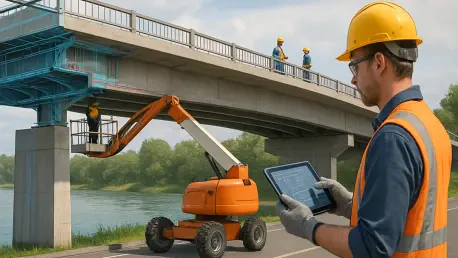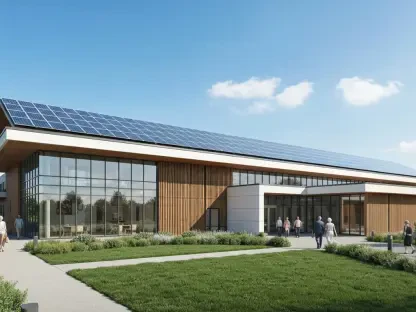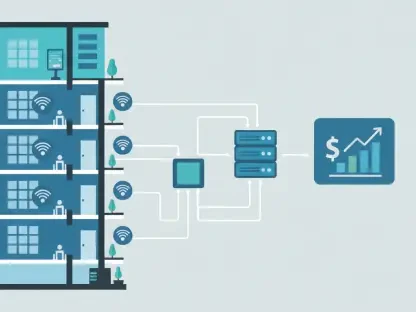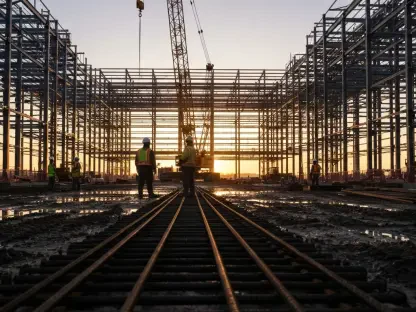As global infrastructure ages under the strain of increasing traffic and environmental challenges, the urgency to maintain critical assets like bridges has never been more pressing, especially since many structures worldwide are exceeding their intended design life. Innovative solutions are essential to ensure safety and longevity. Building Information Modeling (BIM) emerges as a game-changer in this landscape, offering a digital framework that promises to revolutionize bridge maintenance. By integrating advanced technologies and data-driven approaches, BIM enables engineers and asset managers to visualize, predict, and address structural issues before they escalate into costly failures. This transformative potential extends beyond mere repair, fostering a shift toward proactive strategies that could redefine how infrastructure is managed. Exploring the capabilities of BIM reveals not only its current impact but also the barriers that must be overcome to unlock its full benefits in maintaining vital transportation networks across the globe.
Unlocking Proactive Maintenance with BIM
The adoption of BIM in bridge maintenance marks a significant departure from traditional reactive approaches, paving the way for preventive strategies that can save substantial costs over time. By creating detailed digital representations of bridges, BIM allows for the simulation of structural behavior under various conditions, helping to identify potential weaknesses long before they manifest as visible damage. Technologies such as 3D geometric modeling play a crucial role, enabling precise documentation of a bridge’s current state with sub-centimeter accuracy. This level of detail supports better planning and resource allocation, ensuring that maintenance efforts are targeted and efficient. Moreover, the integration of real-time data through digital twin workflows enhances monitoring capabilities, offering insights into ongoing wear and tear. Such advancements empower decision-makers to prioritize interventions based on data rather than guesswork, fundamentally altering the approach to infrastructure care and extending the lifespan of critical assets.
Beyond the technical advantages, BIM fosters a collaborative environment where stakeholders can access and share critical information seamlessly. The ability to centralize data on structural health, maintenance history, and performance metrics through BIM platforms improves communication among engineers, contractors, and government bodies. This shared understanding helps in aligning maintenance schedules with budgetary constraints and traffic demands, minimizing disruptions. Additionally, the use of machine learning algorithms, such as Convolutional Neural Networks, within BIM systems has shown remarkable precision in detecting issues like cracks, further reducing human error. However, while these tools offer immense potential, their effectiveness hinges on overcoming challenges like interoperability between systems and ensuring data security. Addressing these hurdles is essential to fully realize the benefits of a data-driven maintenance paradigm that BIM champions, ultimately leading to safer and more reliable bridge networks worldwide.
Overcoming Barriers to BIM Adoption
Despite the clear advantages of BIM in transforming bridge maintenance, significant obstacles stand in the way of its widespread implementation across the industry. High initial costs associated with advanced technologies like LiDAR, which can consume a notable portion of maintenance budgets, often deter smaller organizations or regions with limited resources from adopting these solutions. Additionally, the lack of expertise in visual programming and other specialized skills required to operate BIM tools creates a steep learning curve for many teams. Interoperability issues with standards such as IFC 4.3 further complicate integration with existing systems, leading to inefficiencies and frustration. These financial and technical barriers must be addressed through strategic investments and policy support to ensure that the benefits of BIM are accessible to a broader range of infrastructure managers, regardless of their scale or location.
Another critical challenge lies in the cybersecurity risks associated with cloud-based integrations and IoT systems often paired with BIM. As bridge maintenance increasingly relies on real-time data exchange, protecting sensitive information from breaches becomes paramount to maintaining public trust and operational integrity. Alongside this, the absence of standardized performance metrics makes it difficult to benchmark the success of BIM implementations across different projects or regions. To tackle these issues, future efforts should focus on developing open-standard workflows and providing targeted training programs to build capacity among professionals. Exploring innovations like edge AI for localized monitoring and blockchain for secure data sharing could also mitigate some of these risks. By systematically addressing these impediments, the path to mainstream adoption of BIM in bridge maintenance can be smoothed, enabling more robust and resilient infrastructure systems globally.
Charting the Future of Data-Driven Infrastructure
Looking back, the journey of integrating BIM into bridge maintenance reflected a balance of optimism and pragmatism, as early adopters navigated both groundbreaking successes and persistent challenges. The consensus among past studies highlighted how BIM, paired with technologies like AI and IoT, significantly reduced long-term operating costs by enabling predictive maintenance. Yet, the high upfront investments and skill gaps often limited its reach, particularly in under-resourced areas. Reflecting on those experiences, it became evident that structured frameworks, such as detailed taxonomies for methodologies, were instrumental in organizing the complex landscape of tools and approaches, providing clarity for practitioners.
Moving forward, the focus should shift toward actionable solutions that build on these lessons. Developing standardized metrics to evaluate BIM performance across diverse contexts will be crucial for consistent improvement. Additionally, investing in accessible training initiatives and fostering international collaboration on open standards can help bridge existing gaps. Exploring emerging technologies, such as localized AI processing, offers a promising avenue to reduce dependency on costly centralized systems. By prioritizing these steps, the industry can ensure that the transformative power of BIM becomes a universal tool for safeguarding bridge infrastructure, turning past challenges into stepping stones for a more resilient future.









